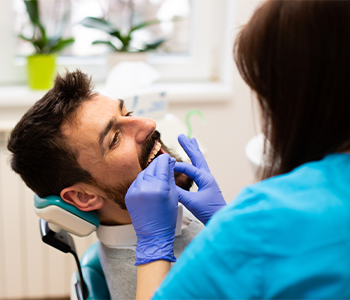
Pain management
Uncover the pivotal role of pain management in dental practice and the underutilized potential of topical anesthetics in ensuring a pain-free treatment experience for every patient.
10 minute read


Why no-shows happen and who is most at risk
It may seem that these days, thanks to the many communications channels available like e-mail, texting, cell phones, automatic reminders, etc., it shouldn’t be difficult to cancel or honor an appointment. And yet no-shows keep happening, so which factors are at play?
Can you predict which patients are at high risk?
Many studies 2 3 4 have tried to predict no-shows and reveal that patients miss appointments for a variety of reasons. While some factors are linked to patients’ negative perceptions of the healthcare system, others are related to their socio-economic status.
Many factors are tied to external circumstances and patient history. It goes without saying that those who have previously missed appointments indicate a much higher risk of no-show. You can reasonably expect the following situations to hinder compliance with appointment keeping:5 6 competing work or meetings, lack of available transportation and geographical distance from clinic, related patient health issues (pre-existing conditions), appointments made by others than the treated patient, low appointment urgency, first appointments, long intervals between appointments.
5 tips to deal with specific no-show situations
We recommend you to do some in-house research, to identify which groups of patients are not honoring their appointments – as it can differ from one practice to another. As for some high-risk situations, you can implement specific protocols to fit each patient group or demographic. A few examples:
Did you know?
Certain personality types are more prone to no-shows: controlling and performing types.7 Have your staff learn to identify types to communicate more effectively. And don’t forget that new patients have no personal relationship with you yet. Extending a personal welcome after their 1st visit could ensure they return.
Negative impacts of no-shows: everybody is concerned8
Try these 4 approaches to prevent and avoid no-shows
Some practices have gone to extreme lengths to discourage no-shows. No-shows are a hindrance of course, but the goal for dentists is to set firm boundaries, all while maintaining a friendly practice and without alienating their patients. You can never fully eliminate them, but you can implement new practices and focus on preventive measures to strongly minimize no-shows. Of course, all of these tips depend on your practice’s policies and your personal relationships with patients.
Digitize your administration and implement clear policies
Better communication to get patients invested13
Leverage new solutions for pain management and single-session treatments
Create a specific system for unreliable patients
How effective are strict policies and penalties?
Studies and testimonials show that strict measures and financial penalties usually aren’t worth your time. You could charge a fee for broken appointments or threaten to charge patients after too many missed appointments – even if you don’t intend to. This works best for repeat offenders, but be warned that this method rarely works. You risk making patients angry and being stuck with unpaid fines. No one likes to lose patients, but many dentists will prefer to deregister a patient from their practice after too many no-shows.19